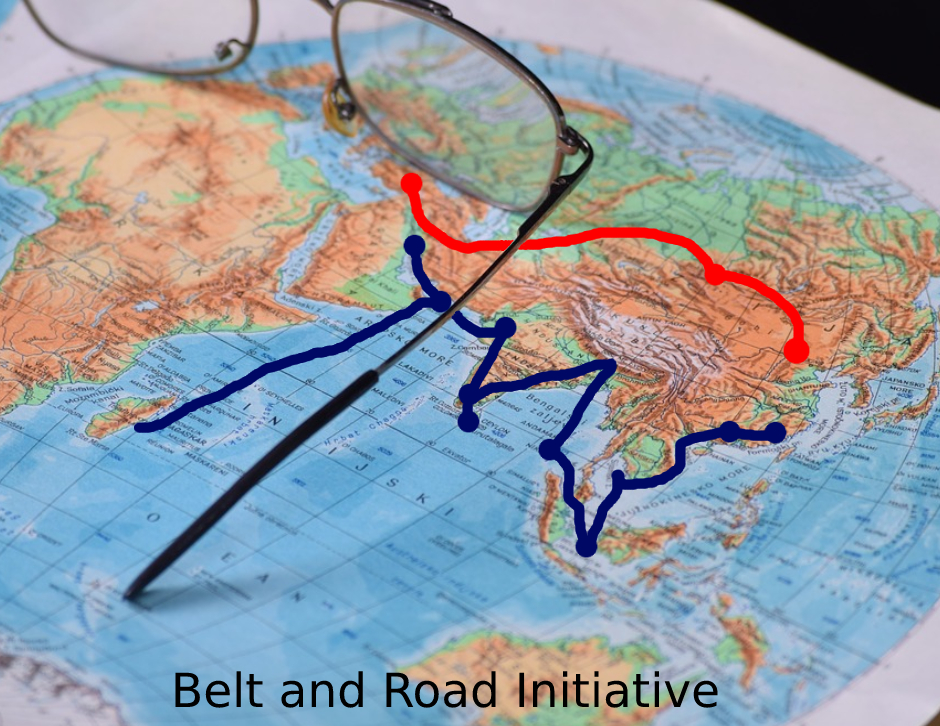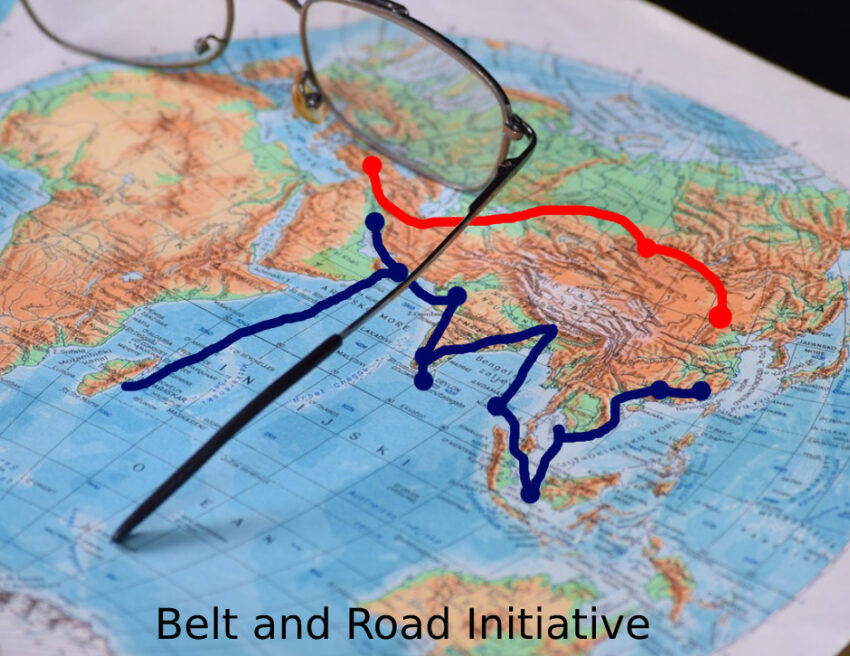The One Belt One Road (OBOR) Initiative is a colossal, long-term project on part of the Chinese government with participation from several other nations. The goal of this project is to enhance international trade and improve logistics for the promotion of global economic development. China is consistently urging other countries to cooperate on all fronts. In other words, China is aiming for a collective investment towards boosting trade and infrastructure. This would result in the creation of greener, effective and sustainable solutions for the global transportation and logistics industry. China conceived the OBOR initiative in 2013 to develop commercial and infrastructure networks by linking China with countries in Europe and Africa. Nevertheless, a similar project was already developed in ancient times in the form of the original Silk Road route.
In today’s blog, we are going to talk about the importance of this initiative for the international shippers, port operators, and the freight forwarding industry as a whole.
What is the One Belt One Road Initiative?
The One Belt One Road is one of the largest regional collaborative projects the world has ever known. However, there are two aspects to this project. Firstly, there is the belt which refers to the ground transportation from Asia to Europe. Its scope extends as far as Rotterdam, Moscow, and Venice. Next, we have the road which is a modernization of the ancient Silk Road. Putting it simply, it aims to connect the shipping lanes in Asia with Africa and Europe. Since 2018, the OBOR project includes over 71 nations. Therefore, it presently involves around 65% of the global population and around 38.8% of the international GDP. As you can surely imagine, the scope of this project is huge. It is all set to irrevocably alter the functioning of the transportation and logistics industry.
The OBOR initiative envisages the creation of new routes and modes of transport for augmenting international trade. The plan which won’t be properly implemented until 2049 aims to lower cross-border issues by means of the creation of a new supply chain design and business development. While several innovations are already in motion, some are in the developmental stage. The innovations envisaged by the Chinese government will enhance operational efficiency while boosting trade. Nevertheless, in order to derive all the benefits of this project, international collaboration, utilization of technologies and new work processes are absolutely crucial. Apart from creating infrastructures like ports, road, and rail, this project also aims to develop an international transportation and logistics network connecting territories that have the potential for high economic growth.
Scope of the OBOR
The OBOR will help manufacturers to better manage their distribution process. For example, it will reinforce the coordination plans with its focus on infrastructures like high-speed freight trains, maritime routes, and energy generation projects. Moreover, reduced time of transport will translate to lower expenses. It will also be advantageous for inventory management within the supply chain. The quick transportation of products will encourage manufacturers to create new products within the minimum time frame without jeopardizing the quality. Additionally, it will reduce the transit time between the far-off countries while enhancing the logistical practices of companies by lowering excess inventories.
Another important area that will be improved by the implementation of this project is supply chain resilience. The enhancement of the quality and reliability of logistical infrastructure will help increase the resiliency in the supply chain. Furthermore, it will also enhance visibility and lead to greater collaboration among logistics companies. Most importantly, it will help logistics companies better deal with supply chain disruptions. The result will be increased and seamless international trade, more buyers, and ultimately more options for the customers.

How will Europe benefit from the OBOR?
Europe is already taking advantage of this project for the exchange of products and services by an ocean route. Chinese multinational, Cosco Shipping has taken over 51% of the stakes in the Port of Piraeus in Greece. As a result, this sleepy port has become a maritime hub connecting ocean freight shipments from Asia to several European markets by means of rail and road transport. Moreover, the reduction in shipping time and costs have encouraged the growth of e-commerce.
The port acquisitions of Beijing is the key to China’s maritime endeavor to connect Chinese and European ports. The number of European ports taken over by China is signalling a change in the map of international trade. Presently Italy is collaborating with China to bolster investment and commercial ties. Additionally, they are also participating in a digital collaboration involving Internet Plus and other new technologies. France has also signed a number of bilateral agreements for increased cooperation between China and France.
Putting it simply, port acquisitions by China in countries participating in OBOR are increasing by the day. Undoubtedly, this is going to have a massive impact on the international shipping industry. This initiative has allowed China to modernize its manufacturing processes and they are now ready for further investments in the coming years. Nevertheless, the political relations between China and many of the parties in the OBOR can pose considerable obstacles. It is too early to conclude anything, only time will tell how things unfold.
Opportunities for African Countries
The Belt and Road initiative will not only encourage Chinese investments in foreign countries, it will also promote global investment into China along the OBOR routes. It gives the African companies the opportunity of collaborating with China in developing new projects. Moreover, the Chinese multinationals will eventually try to find local partners and develop projects in several participating African nations. As per a statement by the Chinese President, the African countries will benefit from this initiative since “inadequate infrastructure is the biggest bottleneck to Africa’s development.” In addition, the OBOR is also being viewed as a catalyst for the growth of African regional economy. If the East African countries can make the most of the projects, they could augment their exports by as much as $192 million per year.
Following this initiative, the Chinese are much more ready to finance African projects. Moreover, this initiative will also bolster the Chinese anti-piracy contingents in Africa which will have a positive impact on maritime trade. Lastly, there will be more investments on part of the Chinese private companies in Africa. These investments are already taking place in areas of tourism, agriculture, real-estate, and infrastructural projects.
In conclusion
The OBOR is reshaping the future of the international transportation and logistics industry. The pairing of ports with rail and road is resulting in increased speed and efficiency. However, the successful implementation of this initiative isn’t going to be without risks and challenges. What is needed at the moment is strong partnerships, and a robust intercontinental support network. While the project is already taking off, the future of our industry is all set to transform in the coming years. Companies that don’t adapt to this changing model will run the risk of falling behind.


